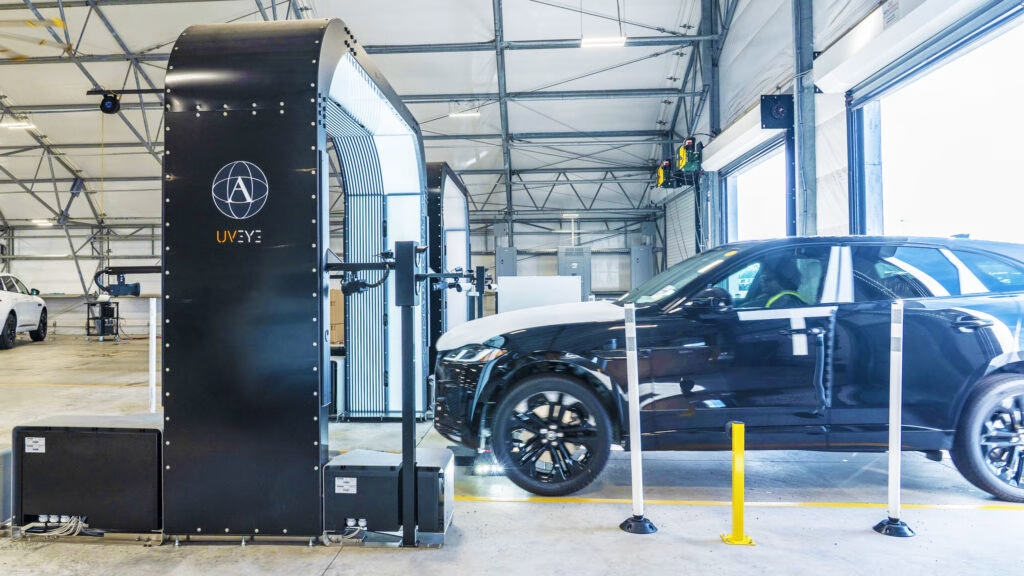How Are AI-Powered Vehicle Scanners Changing the Game for Jaguar Land Rover Buyers?
Imagine picking up your brand-new Jaguar or Land Rover and knowing, with total confidence, that it’s been checked for every scratch and dent—even the ones you’d never spot yourself. That’s exactly what’s happening at three major US ports, thanks to a new partnership between Jaguar Land Rover (JLR) and UVeye, a leader in AI-driven vehicle inspection technology. These high-tech scanners are now in place at Brunswick, Georgia; Baltimore, Maryland; and Port Hueneme, California, giving JLR buyers a new level of peace of mind.
What Makes UVeye’s System Different from Traditional Inspections?
Let’s be honest: manual inspections can be hit or miss. Human eyes get tired, lighting isn’t always perfect, and tiny flaws can slip through the cracks. UVeye’s AI-powered scanners flip the script. As vehicles roll through the inspection stations at a slow crawl, the system scans every inch—top, bottom, and sides—spotting damage as small as 20 millimeters (about the width of a pencil eraser). That includes those sneaky little dings and scratches that often go unnoticed until you’re already driving off the lot.
The process is lightning-fast, too. Within seconds, any detected issues are flagged and sent straight to an operator’s tablet. That means less waiting around, fewer mistakes, and a smoother journey from port to dealership. According to UVeye’s CEO Amir Hever, this isn’t just about efficiency—it’s about building trust and transparency into the entire supply chain.
Why Is JLR the First to Roll This Out at Scale in the US?
JLR is setting a new standard here. While other big names like Amazon and General Motors have adopted UVeye’s technology for their own fleets, JLR is the first automaker to use these AI scanners at scale for new vehicle imports in the US. That’s a big deal. It signals a shift toward smarter, more reliable logistics—something that benefits not just the company, but also dealerships and, most importantly, drivers.
This move comes at a time when AI vehicle inspections are making headlines for less positive reasons. Some rental car customers, for example, have found themselves charged for damage flagged by similar systems—sometimes for dents they can’t even see. But for JLR buyers, this tech acts as a safeguard, catching any shipping or production flaws before the car ever reaches the showroom.
How Do These AI Inspections Actually Work?
The magic is in the details. UVeye’s stations are packed with advanced sensors: underbody scanners, tire analyzers, and 360-degree cameras that leave no stone unturned. As each car passes through, the system compares its condition against a digital baseline, instantly flagging anything out of the ordinary. Operators get real-time alerts, so there’s no lag between detection and action.
This level of precision is a game-changer for quality assurance. In the past, minor damage might go unnoticed until a customer pointed it out—sometimes leading to awkward conversations and costly repairs. Now, JLR can catch and address these issues before the car even leaves the port. The result? Pure magic for anyone who values a pristine new ride.
Are There Any Downsides or Concerns with AI Vehicle Inspections?
No technology is perfect, and AI-powered inspections are no exception. Some consumers worry about false positives—cases where the system flags harmless marks or manufacturing quirks as damage. This has been a hot topic in the rental car world, where customers have occasionally been billed for barely-there blemishes.
JLR’s approach, though, is different. By using the tech as a quality control measure before vehicles reach customers, they’re aiming to prevent disputes rather than create them. Still, it’s important for automakers and technology providers to keep refining these systems, ensuring they’re accurate, fair, and transparent. After all, trust is everything when it comes to big-ticket purchases like a new car.
What Does This Mean for the Future of Car Buying and Ownership?
AI-driven inspections are quickly becoming the norm across the automotive industry. With companies like Amazon, GM, and multiple rental agencies jumping on board, it’s clear that this technology is here to stay. For buyers, that means more transparency and fewer surprises—no more discovering a mystery scratch weeks after you’ve taken delivery.
It also sets a new bar for accountability. Dealerships and manufacturers can track a vehicle’s condition from the moment it enters the country, creating a digital paper trail that protects everyone involved. And as these systems get smarter, we can expect even faster, more accurate inspections—maybe even personalized reports for every buyer.
The big takeaway? AI-powered vehicle inspections aren’t about perfection—they’re about smarter adjustments. Start with one change this week, and you’ll likely spot the difference by month’s end. Whether you’re a buyer, a dealer, or just a car enthusiast, that’s a shift worth watching.

